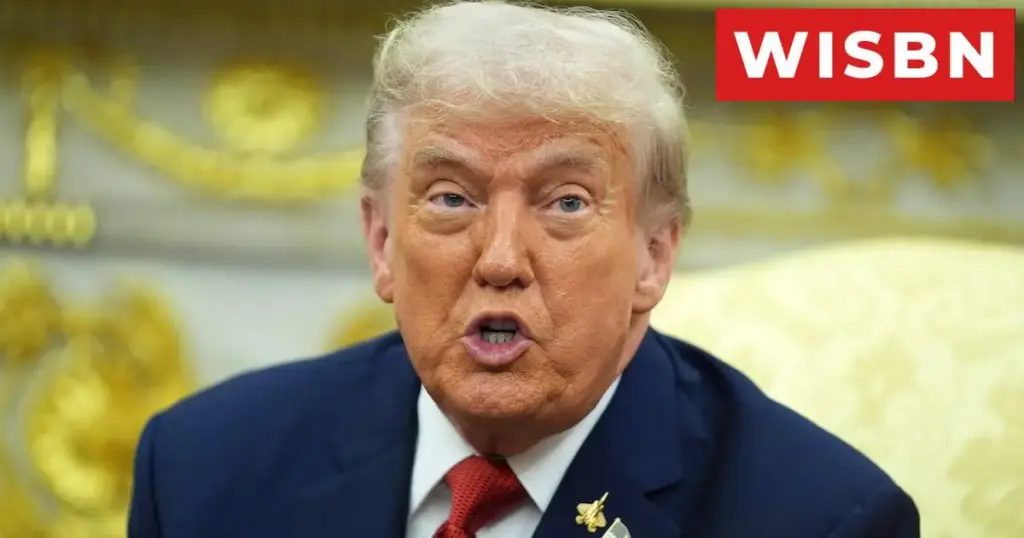President Donald Trump’s striking assertion this week that Ukraine could recover all its territory with backing from the European Union and NATO is implausible without a significant change in the alliance’s approach to Russia’s invasion, military analysts, officials and diplomats in the area say.
Still, many cautioned, major future Ukrainian successes cannot be wholly dismissed, especially if Russia’s war economy collapses and Ukraine substantially bolsters its armed forces and arsenal with help from partners including the United States — an outcome that seems unlikely as Trump shifts responsibility for supporting Kyiv to Europe.
“President Trump said that Ukraine, with support from the European Union, could reclaim its entire territory,” Polish Prime Minister Donald Tusk wrote on X on Thursday. “Beneath this unexpected optimism is a pledge of reduced U.S. engagement and a transfer of responsibility for ending the war to Europe. Better truth than fantasies.”
European leaders greeted Trump’s latest turn with guarded approval but doubt it will translate into pressure on Russia or push some European countries already bearing much of the load to do more. NATO allies, led by the U.S., have long resisted Kyiv’s pursuit of membership in the alliance.
If Washington were to commit to supporting Ukraine to the fullest extent of its capacity by supplying advanced arms including cluster munitions and new systems like HIMARS and ATACMS, then Trump’s “statement is absolutely truthful, 100%,” said a senior official in Ukraine’s military command, speaking anonymously because he was not authorized to address the press.
Large-scale deliveries of U.S. arms would “immediately boost morale” and improve recruitment and battlefield performance, while addressing chronic shortages of ammunition and artillery, setting the stage for swift Ukrainian advances, he said.
“The American partners know our priorities. The list is on the table. If they could provide us this list, these items we requested, I think the result will even be visible by the end of the year,” the official added.
Rep. Michael R. Turner (R-Ohio), who returned Wednesday after meeting Ukrainian defense and intelligence chiefs in Kyiv, said Ukraine could reclaim territory. The critical element is enforcing punishing economic sanctions and trade barriers, which Congress is weighing, to strangle Russia’s industrial production that fuels its war.
“We have to turn the spigot off of the Russian economy,” he said, adding that Ukraine will also need U.S.-made long-range missiles to drive Russian forces back and “a full commitment to continuing U.S. military aid and assistance.”
That level of commitment, however, has been lacking since the war began, said retired Lt. Gen. Ben Hodges, a former commander of U.S. Army Europe. While NATO supports Ukraine, it has consistently been hesitant — in both weapons and sanctions — to fully back Kyiv’s aim of regaining all its territory, including Crimea, and delivering a decisive defeat to Russia.
“If your starting point is, well, Ukraine’s going to have to give up land, you know, you’re not going to enact policies that will get it all back,” he said.
NATO officials and diplomats have recently offered a grim appraisal of Kyiv’s capacity to retake large swaths of territory. Although Ukraine’s extensive drone production and a recent deal for U.S. arms funded by Europeans have bought its forces more time than expected on the front, a major offensive would be fraught.
Without a substantial change in diplomacy or weaponry, most officials instead foresee the grinding war persisting.
The widespread use of drones and recent improvements in their capabilities make sudden breakthroughs difficult if not impossible for either side — especially with winter approaching and tree cover thinning. Meanwhile, Russia continues to make small local gains in several sectors even as Kyiv retakes some ground in the east. The incremental shifts are minor compared with Russia’s initial 2022 advance, but still show an edge.
“It may be slow,” said a NATO official, speaking anonymously to share sensitive security judgments, like others in this article. But “if you look at the amount of force Russia brings to this fight, the air and drone attacks, the momentum is on Russia’s side.”
Even so, Ukraine’s partners do not anticipate a major collapse of its defenses, the official said, and “the level of aid can certainly change the dynamics.”
The Kremlin — facing strong Ukrainian resistance — is having difficulty meeting even President Vladimir Putin’s scaled-back goals, such as occupying the entirety of four regions he already says he annexed. NATO assesses Russia would be unable to control all four even over the next three years at its present pace.
Offensives typically consume far more troops and incur heavy casualties — a problem Ukraine could also confront if it attempts to go on the attack and retake territory.
“The weapons technology very much favors the defender with all the drones,” said Anders Puck Nielsen, an officer and military analyst at the Royal Danish Defense College. Still, he noted, Russia could encounter future personnel shortages that alter the equation if its economy is severely damaged. “The Russian manning model isn’t sustainable once the state runs out of money,” he said.
Manpower, however, is also a potential shortfall for Ukraine. Observers point out that even if Ukraine’s supporters met its demands for funding and arms, Kyiv faces a troop deficit that affects combat — though Ukrainian officials contend that better resources would encourage more recruits to sign up.
“The hard battlefield reality is that in Donbas, over the last couple of months, the Russians made progress, square kilometer by square kilometer … and despite all the billions we give Ukraine, it has proven impossible to stop them,” a NATO diplomat said.
“We see the Russians meeting mobilization targets easier; the troop ratio is not favorable to Ukrainians,” the diplomat added. “They need to mobilize and it’s up to us to equip and train those brigades.”
The front line, meanwhile, is not a clear-cut boundary between opposing positions separated by a no-man’s-land but increasingly a tangled mix, with Russian units straining to take territory bit by bit.
The focus on infantry is helping Moscow slow the loss of heavy equipment as it seeks to ramp up new production in the months ahead.
“They have literally taken tanks out of museums,” said Matthew Saville, director of military science at the Royal United Services Institute in London, a defense think tank. “They are stretching it out by changing tactics, relying more on infantry attacks. They’ve got enough dive-bombers, enough first-person drones, enough people.”
Ukraine has so far managed to hold its ground thanks to international aid and ramped-up drone production. And its success in striking oil refineries — monitors say it has hit half of Russia’s largest facilities in the past month, some multiple times — is beginning to affect the Russian economy. Gas prices in Moscow are rising.
“The problem is, is that enough pain?” Saville asked. “The answer is no.”
Former Ukrainian defense minister Oleksii Reznikov said he has always thought Ukraine can win the war if partners deliver the right assistance at the right moment.
“David and Goliath,” he said. “It’s a very famous story. Ukrainians are brave, smart and creative. We are using different techniques like sling and stone, neutralizing the difference in manpower.” Victory is attainable, he argued, with sufficient weapons aid and strict sanctions on Russia.
It would require a mix of new armaments and allied support before a ceasefire, plus funds from frozen Russian assets and new sanctions on oil and banking, to “make Russia very weak and defeatable,” agreed one Eastern European diplomat. “Then it would be possible.”
Some of Ukraine’s principal supporters, however, have resisted more aggressive measures during the war or have struggled to sustain funding flows.
Russia will maintain its edge unless it suffers a serious crisis that alters the condition of its forces, said Yan Matveyev, an independent Russian defense analyst living in exile. “Without a serious weakening of the Russian army, no large-scale Ukrainian offensive will succeed,” he said. “Thus Ukraine must count on problems either with the personnel of the Russian forces or with their funding.”
“Ukraine can retake all its territory by military means,” he added. “But for that to happen, as in past major wars, its opponent would have to exhaust its economic resources.”
Despite Trump’s change in rhetoric, there is effectively no shift in the U.S. stance and the White House is still shifting the burden of the war onto Europe, said Mikhail Zvinchuk, a well-known Russian military blogger.
The Russian military, however, is struggling to press its advantages in manpower and hardware, he said, because “we cannot make sudden advances through unprepared terrain with our armored columns. Instead, we need to continue exerting pressure and gradually wear down the enemy’s forces.”
“This is the only way to achieve victory,” he added. “And when the flow of weapons, ammunition and loans stops for the Ukrainians, then they can say that the conflict has reached a turning point. This is not the case at the moment.”
See also: Mercury Systems Secures $12.3M Military Aircraft Contract



